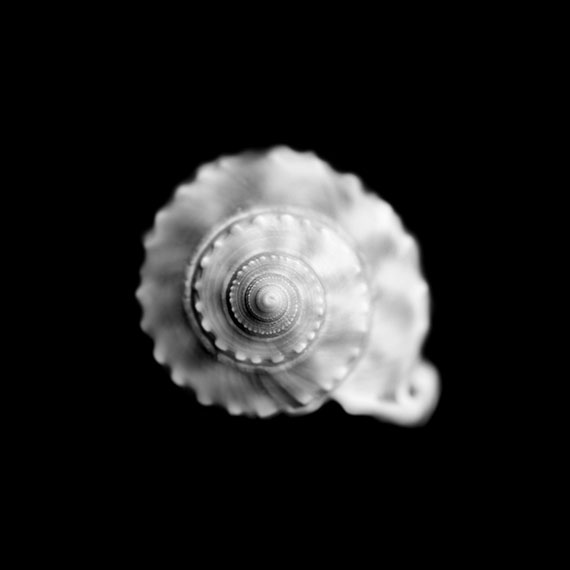
Paolo Morello »
Aphrodite’s Nostalgia
Exhibition: 30 Nov 2013 – 12 Jan 2014

Palazzo Moncada di Paternò
Via Bandiera, 11
90133 Palermo
+39 347 -4526121

Paolo Morello
"Aphrodite’s Nostalgia"
November 30th, 2013 - January 12th, 2014
In his famous introduction to Essays on a Science of Mythology, Károly Kerényi affirms that myths never explain causes (aitia), but rather they speak of principles or, more exactly, of origins (archai). For the Greeks, the idea of Origin was intertwined with that of Fate; both concepts were a constant presence and influence in their daily lives.
This series of photographs is dedicated to the myth of Aphrodite and to the shell, one of the symbols that represents her. In the collective imagination, a bond of perfect specularity has come to exist between the goddess and the shell. Dozens of sources sing of Aphrodite, the goddess of beauty and love, of sensuality and the voluptuousness of love, but also of fertility and Spring. The use of shells as amulets, which women wore around their necks to invoke fertility, has been widely attested in the entire Mediterranean basin since ancient times. In the Theogony, Hesiod tells the story of how Cronus was instigated by Gaia to emasculate Uranus, his «execrable» father. After falling into the sea, the genitals of Uranus emitted a «white foam» from which Aphrodite was born. In this version of the myth, there is an astonishing concentration of elements related directly to the theme of the Origin. Indeed the myth of the birth of Aphrodite veils and contains a cosmogonic myth: it is not so much the story of the birth of a goddess, but a broader statement on the origins of life.
In his poem Geburt der Venus, Rainer M. Rilke wonderfully sings of the first moments of the goddess’ life: «Like a young leaf, green and curled up, she opens / stretches and slowly grows longer, / her body unfolds fully / in the cool and pristine morning breeze.» In describing as if in slow motion her gradual opening towards life, Rilke captures an unusual aspect of the mythography of Aphrodite: an auroral moment. Moreover, Aphrodite is rendered as the personification of the awakening of consciousness, the vertigo of coming to life.
This version coincides with the mith told by Hesiod. The story of Uranus’ emasculated member, the foam dispersed in the sea, the birth of Aphrodite, the generating power of the goddess – under whose feet flowers bloom on the shores of Cyprus – everything works together to create a myth of creation and a different version of the story of the Origin. In my view, before she became the goddess of beauty, love and sexuality, Aphrodite was the goddess of the Origin. But don't the full lips and the perfect spirals of the shell also symbolise the mystery of the Origin? Long considered a symbol of femininity, the shell is indeed an archetypal image of the Origin. And the two terms – femininity and Origin – are they not closely related to each other? Isn’t the experience of being created the first experience common to all living beings? What memories, which unconscious traces, do we retain of this experience? Do we continue to nourish the memory of our origin, or have we lost it forever? Today, the question of our Origin is hardly considered important. The profound connection between Aphrodite and the shell has grown old and worn. It is precisely this feeling of estrangement that these photographs attempt to portray: a feeling of awe and, at the same time, nostalgia.
�

About Paolo Morello
Photographic historian, photographer, and publisher, Paolo Morello studied at the Scuola Normale in Pisa and St John’s College in Oxford. He taught Photography and History of Photography at the universities of Palermo, Bologna, Brescia, Verona, at the Università Ca’ Foscari in Venice, at the Università Cattolica del Sacro Cuore in Milan, and from 2001 to 2009 at the Università iuav in Venice. At the Università Cattolica in Milan, he founded and directed the two-year Master’s course in Photography. From 2001 to 2010 he was contributing editor of the magazine ‘History of Photography’, and from 1999 to 2011 he directed the Istituto Superiore per la Storia della Fotografia. In 2011, he founded Glint, a Publishing company based in London.
He is the author of many seminal works on the history of photography in Italy, among them: Enzo Sellerio fotografo. Tre studi siciliani (1998); Briganti (1999); Amen fotografia (2000); Gli Incorpora (2000); Fulvio Roiter (2002); Alfredo Camisa. Carteggio 1955-1963 (2003); Piergiorgio Branzi (2003); Mario De Biasi (2003); Ferruccio Ferroni. Carteggio 1952-1959 (2004); Mario Lasalandra. Poeti, maschere, attori, fantasmi (2005); Gianni Berengo Gardin. Venezia (2006); Mario De Biasi. Budapest 1956 (2006); Carla Cerati. Nudi (2007); Gianni Berengo Gardin. Polesine (2008). In 2008, the Istituto Superiore per la Storia della Fotografia also published his popular Guida pratica al mercato della fotografia (A Practical Handbook to the Photography Market, 2008), and 2010 saw the publication of his ground-breaking twin-volume study La fotografia in Italia.
An enthusiastic patron, over the past fifteen years he has been putting together an outstanding collection of photographs, originally intended to form the first Museum in Italy dedicated to Italian photography. A wide selection of masterworks were exhibited in Paris (2007), Milan (2010), and Moscow (2011). In 2012, Christie’s in London held an auction entirely devoted to it.
Also a committed photographer, he has published in Glint’s hand-made editions: In the Beginning, The Tale of the Ficus, Aphrodite’s Nostalgia, The Dream of the Ladder, A Journey to Sicily, Tat Tvam Asi (That You Are), and Light upon Light.
More information: www.paolomorellostudio.com
�
